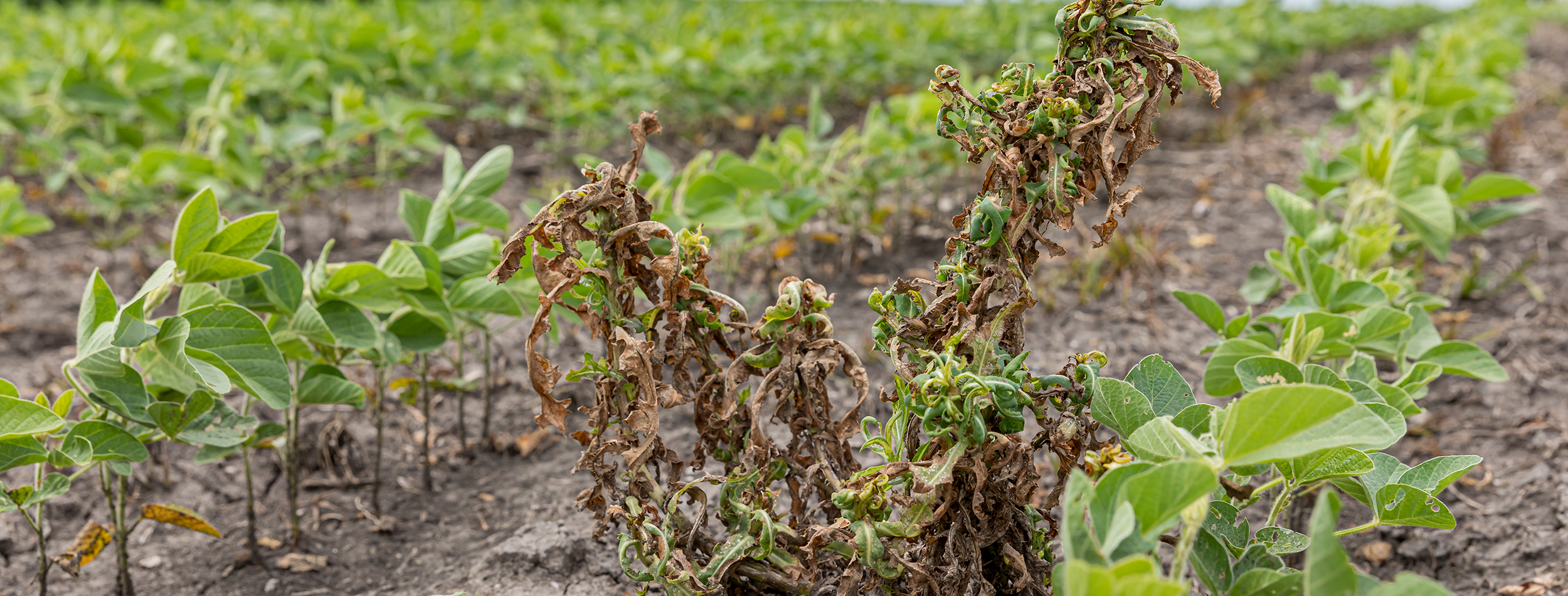
Extension research aims to fight weeds
Share This
Weeds. They’re the bane of a farmer’s existence.
Luckily, for Wisconsin soybean growers, University of Wisconsin-Madison Extension Cropping Systems Weed (WiscWeeds) researcher Rodrigo Werle and his team are on the case. And with the Wisconsin Soybean Marketing Board (WSMB) wisely investing checkoff dollars in the program, farmers continue to reap the benefits of a robust research program.
“WSMB moves mountains to support what we do,” Werle said. “A lot of the work that we’re doing is funded by them.”
On June 15, WiscWeeds hosted the 2023 Integrated Giant Ragweed Management plot tour at Rock County Farm in Janesville.
“Giant ragweed is the second most troublesome weed species in Wisconsin corn and soybean production systems,” Werle said. “Because it’s infested with giant ragweed, the Rock County Farm has been an outstanding place for us to conduct research that looks at the management of this troublesome weed species.”
The Rock County location has another advantage that makes it prime for gathering information on fighting troublesome weeds.
“Another important attribute of the Rock County Farm is that atrazine isn’t prohibited in that area so we can do research looking at atrazine for weed control,” Werle said.
Though it is restricted in parts of Wisconsin, it’s still important to study the effectiveness of atrazine for those growers who may be able to incorporate it into their pest management regime, which is where the Rock County Farm has advantages for Werle’s team.
If giant ragweed is the second most troublesome weed in Wisconsin, soybean growers know exactly which weed is the most troublesome. Waterhemp.
Thankfully, pre-emergent herbicides have been a game changer in defending soybean fields from waterhemp.
“When I first arrived in Wisconsin, there was low adoption of pre-emergence herbicides,” Werle said. “Waterhemp requires an effective pre-emergent herbicide program.”
Unfortunately, timely rains have been difficult to come by across the state, stunting the effectiveness of pre-emergence herbicides, which require rainfall for activation in the soil. Werle said that his phone hasn’t stopped ringing with growers inquiring about a plan of attack against waterhemp and other problematic weeds in such dry conditions.
“For pre-emergence to work, we need appropriate rainfall,” Werle said. “A lot of our growers applied their pre-emergence but didn’t have a timely activating rainfall.”
Like its field day in June, WiscWeeds is hosting a Waterhemp Management field day on Aug. 10 at the O’Brien Family Farm in Brooklyn where they conduct most of their integrated waterhemp management research. Everyone is welcome to spend the afternoon with Werle and his team to gain more knowledge on the latest waterhemp research.
As the growing season continues to progress, Werle will remain diligent in guiding Wisconsin soybean growers through their fight against weeds. You can learn more about their work on Twitter, @WiscWeeds, or on their website www.WiscWeeds.info.



